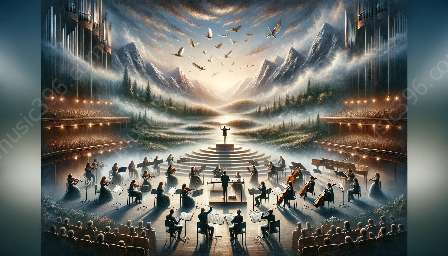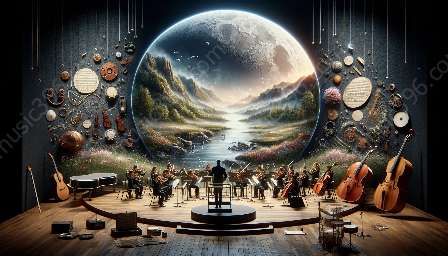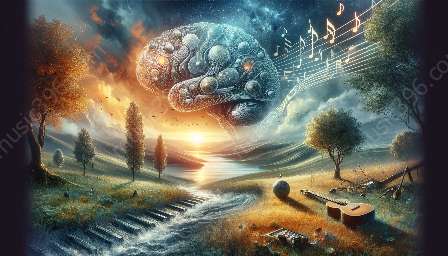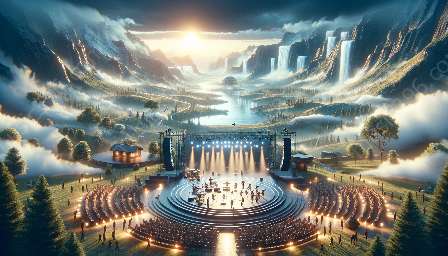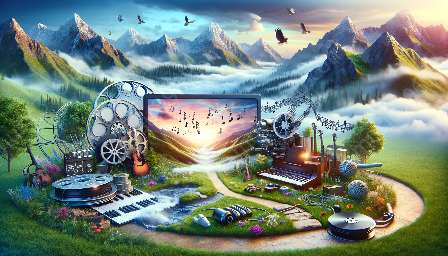Music and sound effects are powerful tools in multimedia storytelling, offering creators the opportunity to evoke emotions, enhance narrative impact, and immerse audiences in captivating experiences. When used effectively, the fusion of music and sound effects can elevate the storytelling experience to new heights, leaving a lasting impression on the audience.
Understanding the Role of Music and Sound Effects in Multimedia Storytelling
Before delving into the strategies for integrating music with sound effects, it's crucial to understand the unique roles each element plays in multimedia storytelling.
Music: Music has the ability to convey emotion, set the tone, and create a sense of atmosphere. It can signal tension, elicit joy, evoke nostalgia, or build anticipation, making it an invaluable tool for establishing and enhancing the mood of a story.
Sound Effects: Sound effects are the auditory details that bring the visual elements of a story to life. From the rustling of leaves to the roar of a crowd, sound effects have the power to transport the audience into the world being depicted, adding depth and realism to the narrative.
Best Strategies for Integrating Music with Sound Effects
1. Emphasize Emotional Resonance
One of the most powerful ways to integrate music with sound effects is to prioritize emotional resonance. By aligning the emotional content of the music with the thematic elements of the story and complementing it with fitting sound effects, creators can elicit profound and memorable responses from their audience. Whether aiming to evoke nostalgia, fear, joy, or excitement, the alignment of music and sound effects can significantly heighten the emotional impact of the storytelling experience.
2. Establish a Cohesive Audio Landscape
To create a seamless and immersive multimedia experience, it's essential to establish a cohesive audio landscape. This involves carefully integrating music and sound effects to complement one another and enhance the overall narrative. By ensuring that the audio elements work in harmony, creators can guide the audience's emotional journey, maintain engagement, and amplify the storytelling impact.
3. Layering and Synchronization
Layering and synchronization are key techniques for integrating music with sound effects in multimedia storytelling. Layering involves weaving multiple audio elements together to create depth and richness, while synchronization ensures that the auditory components align precisely with the visual elements of the story. Whether syncing a dramatic musical crescendo with a climactic scene or layering subtle sound effects to enrich the ambient soundscape, these techniques can intensify the immersive experience for the audience.
4. Rhythmic and Harmonic Complement
When integrating music with sound effects, creators can leverage the rhythmic and harmonic elements of music to complement and enhance the audiovisual narrative. By synchronizing sound effects with the rhythm and melody of the music, a sense of cohesion and synergy can be achieved, elevating the overall impact of the storytelling. Strategic use of harmonies, tempo, and musical motifs can further enrich the auditory landscape, resonating with the visual storytelling to captivate the audience.
5. Contextual Relevance and Subtlety
Contextual relevance and subtlety play significant roles in effective integration of music and sound effects. By considering the context of the narrative, creators can select and position audio elements that enhance the storytelling without overshadowing the visual or thematic elements. Subtle sound effects and nuanced musical cues can reinforce the narrative's authenticity, immerse the audience in the story world, and create a more immersive and compelling experience.
Music in Multimedia: Elevating the Audience Experience
When we examine the impact of music in multimedia, it becomes evident that the strategic integration of sound and music enhances the storytelling experience in profound ways. From video games and films to interactive multimedia installations, music plays a pivotal role in shaping audience engagement and emotional resonance.
The Emotional and Narrative Power of Music
Within multimedia contexts, music possesses the unique ability to trigger emotional responses and deepen narrative impact. Through carefully crafted musical compositions and the incorporation of sound effects, creators can immerse audiences in the story's world, heightening their emotional investment and amplifying the immersive experience.
Enhancing Immersion and Atmosphere
By seamlessly integrating music and sound effects, multimedia creators can elevate audience immersion and establish captivating atmospheres. Whether it's the haunting melodies of a suspenseful scene or the triumphant fanfare accompanying a heroic victory, the fusion of music and sound effects brings narratives to life, making them more compelling and memorable.
Interactive Multimedia Experiences
In interactive multimedia formats such as video games or virtual reality experiences, the integration of music and sound effects becomes even more crucial. These dynamic environments rely on audio elements to engage players and foster a sense of presence and agency. By strategically blending music and sound effects, creators can enhance interactivity, guide emotional responses, and enrich the overall gaming or interactive experience.
Music Reference: Crafting Sonic Soundscapes
When it comes to sourcing music and sound effects for multimedia storytelling, the art of crafting sonic soundscapes is paramount. Whether selecting original compositions, licensing existing music, or creating custom sound effects, it's essential to curate a diverse and evocative sonic palette that serves the needs of the narrative.
Utilizing Diverse Musical Genres
By drawing from a wide range of musical genres and styles, creators can align the sonic identity of the multimedia project with its thematic and narrative elements. Different musical genres carry distinct emotional and tonal qualities, allowing creators to select compositions that resonate with the story's essence, engaging the audience on multiple sensory levels.
The Art of Foley and Sound Design
In addition to musical compositions, the art of foley and sound design plays a crucial role in enriching the audiovisual storytelling experience. From capturing organic environmental sounds to crafting otherworldly audio effects, the meticulous curation of sound effects adds depth, texture, and authenticity to the narrative, bringing visual elements to life in a vivid and compelling manner.
Collaborative Creation and Custom Compositions
For multimedia projects seeking unique and tailored audio elements, collaborative creation and custom compositions offer unparalleled opportunities. Working with composers, sound designers, and audio engineers allows creators to develop original, bespoke musical and auditory content that perfectly aligns with the thematic nuances of the storytelling, ensuring a heightened level of cohesion and narrative resonance.
Conclusion
Integrating music with sound effects in multimedia storytelling is a multifaceted art that demands a strategic approach to evoke emotional resonance, create immersive audio landscapes, and craft compelling sonic soundscapes. From aligning music with sound effects to curating diverse musical palettes and customizing audio content, the fusion of music and sound effects empowers creators to captivate audiences and elevate the storytelling experience to unprecedented heights.














